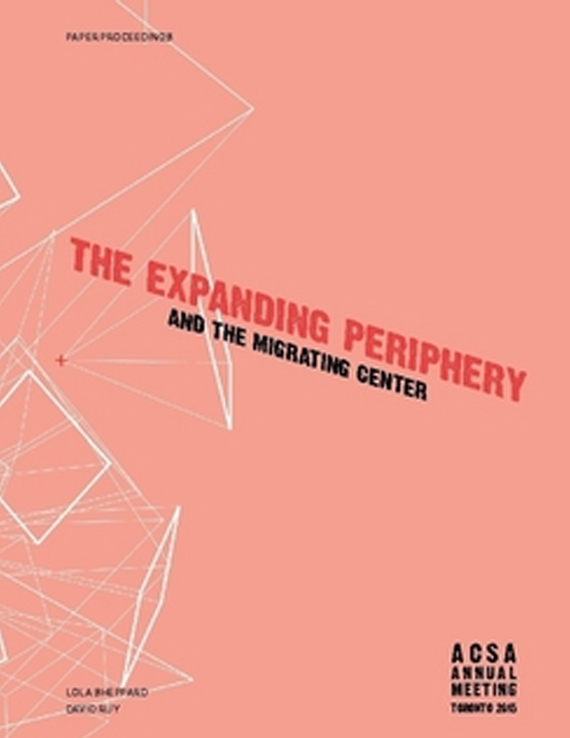Author(s): Marcelo Spina
Robert Venturi’s influential book Complexity and Contradiction in Architecture redefined the position and nature of the word “complexity” in architecture by associating it with a form of imaginative progress relevant in contemporary culture. The Deconstructive project in architecture used formal fragmentation, collision or dislocation of existing canons to generate visual complexity. The reading of parts, either made autonomous or detached from the origin of the whole, was called into question. The 1990’s were shaped by important philosophical writings from Gilles Deleuze and Felix Guattary, who influenced the alignment of architecture with science by theorists such as Sanford Kwinter and Greg Lynn; form followed variegated and intricate fields, along with complex processes of deformation and transformation. Patrick Schumacher’s theory on parametricism shares similar principles of complexity, while giving to architecture new political, cultural and economic responsibilities through social communication.From this growing obsession for control and technological perfection, our current media culture has become accustomed to the ever-increasing refinement and sophistication that now characterize our visual field. In architecture, we have come to realize that the reliance in only one aesthetic principle governing form, no matter how pure, fluid or convoluted it may be, is an inherent cultural tyranny and aesthetic reductionism that diffuses tension by suppressing dissent. Nowadays, we are experiencing an important shift in architecture centered on but not limited to postdigital vagueness. Indeterminacy, incongruity and defamiliarization, wherein dichotomy is a form of complexity in itself, are being reintroduced as major components of this evolving discourse.A combined exhaustion with indexicality and the design processes associated with it, the perceived inefficacy of the “field” approach to building form, and the failure of a single surface at producing substantive volume and architectural mass, induce a renewed interest in solid objects and monolithicity. As a way to re-orient the attention on mass, one should avoid the over-use of ornamentation and surface articulation that can easily lead to figural expression. This explains the growing interest in texture, coarseness and grain, which could be compared with the confusion with noise from a toned down approach to enunciation.Through our recent projects transitioning from monolithic solids to fuzzy mute forms, this paper will advocate for architecture`s new position towards complexity through a dichotomy between monolithicity and the fuzzy.
Volume Editors
David Ruy & Lola Sheppard
ISBN
978-0-935502-95-4

 Study Architecture
Study Architecture  ProPEL
ProPEL 
